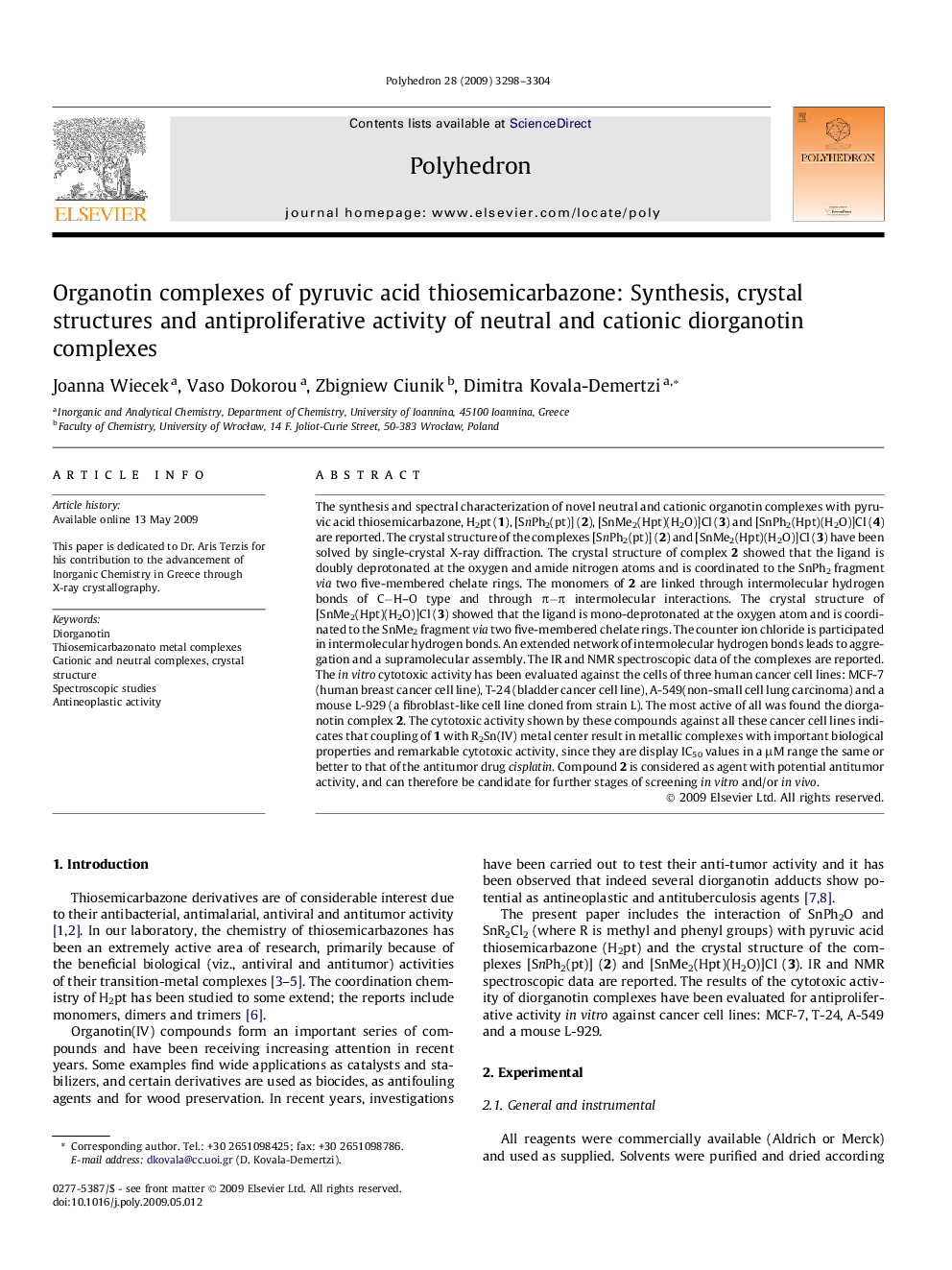| Article ID | Journal | Published Year | Pages | File Type |
|---|---|---|---|---|
| 1337409 | Polyhedron | 2009 | 7 Pages |
The synthesis and spectral characterization of novel neutral and cationic organotin complexes with pyruvic acid thiosemicarbazone, H2pt (1), [SnPh2(pt)] (2), [SnMe2(Hpt)(H2O)]Cl (3) and [SnPh2(Hpt)(H2O)]Cl (4) are reported. The crystal structure of the complexes [SnPh2(pt)] (2) and [SnMe2(Hpt)(H2O)]Cl (3) have been solved by single-crystal X-ray diffraction. The crystal structure of complex 2 showed that the ligand is doubly deprotonated at the oxygen and amide nitrogen atoms and is coordinated to the SnPh2 fragment via two five-membered chelate rings. The monomers of 2 are linked through intermolecular hydrogen bonds of C−H–O type and through π−π intermolecular interactions. The crystal structure of [SnMe2(Hpt)(H2O)]Cl (3) showed that the ligand is mono-deprotonated at the oxygen atom and is coordinated to the SnMe2 fragment via two five-membered chelate rings. The counter ion chloride is participated in intermolecular hydrogen bonds. An extended network of intermolecular hydrogen bonds leads to aggregation and a supramolecular assembly. The IR and NMR spectroscopic data of the complexes are reported. The in vitro cytotoxic activity has been evaluated against the cells of three human cancer cell lines: MCF-7 (human breast cancer cell line), T-24 (bladder cancer cell line), A-549(non-small cell lung carcinoma) and a mouse L-929 (a fibroblast-like cell line cloned from strain L). The most active of all was found the diorganotin complex 2. The cytotoxic activity shown by these compounds against all these cancer cell lines indicates that coupling of 1 with R2Sn(IV) metal center result in metallic complexes with important biological properties and remarkable cytotoxic activity, since they are display IC50 values in a μM range the same or better to that of the antitumor drug cisplatin. Compound 2 is considered as agent with potential antitumor activity, and can therefore be candidate for further stages of screening in vitro and/or in vivo.
Graphical abstractThe synthesis and spectral characterization of novel neutral and cationic organotin complexes with pyruvic acid thiosemicarbazone, H2pt (1), [SnPh2(pt)] (2), [SnMe2(Hpt)(H2O)]Cl (3) and [SnPh2(Hpt)(H2O)]Cl (4) are reported. The crystal structure of the complexes [SnPh2(pt)] (2) and [SnMe2(Hpt)(H2O)]Cl (3) have been solved by single-crystal X-ray diffraction. The in vitro cytotoxic activity has been evaluated against the cells of three human cancer cell lines: MCF-7 (human breast cancer cell line), T-24 (bladder cancer cell line), A-549 (non-small cell lung carcinoma) and a mouse L-929 (a fibroblast-like cell line cloned from strain L). The most active of all was found the diorganotin complex 2. Compound 2 is considered as agent with potential antitumor activity, and can therefore be candidate for further stages of screening in vitro and/or in vivo.Figure optionsDownload full-size imageDownload as PowerPoint slide
